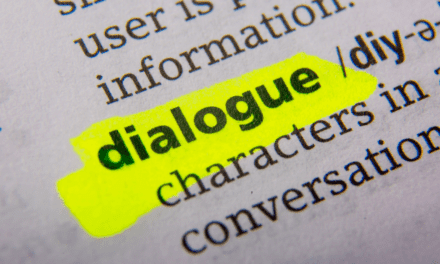Once a writer sent a manuscript off to his editor without a speck of punctuation. His note explained, “I’m also sending you a bag of commas, periods, exclamation marks, and so on. You can put them wherever you like.”
This story captures the confusion we sometimes feel in the punctuation department. Not all writers are grammarians or punctuation experts; we write because we love to read, and we want to create the sorts of things we love reading. We handle the language by an ear trained through years of reading and punctuate the same way. So here is a quick review of some of the stickier situations.
Periods
According to William Zinsser, “There’s not much to be said about the period except that most writers don’t reach it soon enough.”
Everyone knows a period ends a sentence, but some become confused when a question is embedded in it: Ernest sometimes asks himself if he should use a period. This sentence states what Ernest sometimes does. It makes no difference that what he does is ask a question; it’s still a statement and needs a period. The same is true for a rhetorical question, as in May I suggest you use a period.
Periods also go inside the quotation marks and inside parentheses that contain independent sentences, thus
Jane said, “We argue about periods the whole night long.”
and (Jane argues about periods the whole night long.)
but Jane argues about periods (until the scones arrive).
And here are some oddities about abbreviating with periods. No one called President Obama BHO, but in the ‘60s, we had JFK and LBJ. Notice the lack of periods; however, it’s J.K. Rowling. When an abbreviation ends the sentence (and it isn’t an exclamation or question), no additional period is needed. Example: Mark was glad he wasn’t a Jr. versus Was Mark glad he wasn’t a Jr.?
Exclamation Marks
Easy does it! We tend to plaster these all over manuscripts – and especially email! Then we have to take them all out! Doesn’t this seem over the top and gushy to you!? (By the way, never use two ending marks. Can’t you make a decision, for goodness sake!?)
Semicolons
Some editors feel they’re antiquated and would rather their authors commit a multitude of comma splices (stay tuned for more on those) rather than use semicolons. I, on the other hand, am always impressed when I see them used properly. Unless verboten, plug them in in two situations:
To separate two independent clauses (aka sentences that can stand alone) that bear some relation to one another: Virginia enjoyed using semicolons; William did not.
To separate a series of items that contain commas: I invited Audre, the writer; Max, the editor; and Norman, the artist. With semicolons, it’s clear I invited three people and told you something about each. Without them, you might think I invited six people but was only sure of the names of three.
Colon
Some people can’t seem to start a list without a colon, yet if the list completes the sentence, it isn’t necessary: Don’t forget to bring your glasses, pens, highlighters, and notebooks. If the lead-in before the list is complete, use the colon: Don’t forget to bring the following: glasses, pens, highlighters, and notebooks.
But what follows a colon doesn’t have to be a list. Like the semicolon, it can separate two related independent clauses, except that what comes after a colon usually has a closer relationship to the preceding than what comes after a semicolon. I think of a colon as announcing that something is coming, as in this example: There’s a lot of activity at the book store today: Jhumpa Lahiri is coming for a book signing!
Dash
While side thoughts are often tucked away in (a pair of) parentheses, they can also be set off with a pair of dashes – longer than a hyphen – to draw more attention to the material. You can also use a single dash to set off an additional thought or explanation – though it’s often seen as a less-formal choice.
Brackets
Brackets perform a couple useful functions. Here are the most common:
They set off the information from a passage already in parentheses: (Charlotte never thought about brackets [judging from her work] and got on quite well without them).
Everything within quotation marks should be true to the source; however, if you need to insert some clarifying information or make the quoted material work grammatically with your sentence, you can do it with brackets: The article said, “George Eliot was a famous Victorian writer and [she] wrote many books.”
Commas
The comma is not considered strong enough for the weight of two sentences, at least that’s how I think of it. (Um, did you catch my comma splice in that last sentence?) Writers use them for two balanced, related, and usually short sentences; to show stream of consciousness; and because they’re allergic to semicolons.
You have several options to avoid the comma splice. Put a period between the two independent clauses. Put a semicolon between them. Get really fancy and add a conjunctive adverb (however, therefore, meanwhile, etc.) or transitional expression (in fact, for example, etc.) after the semicolon, like this:
James loved tossing semicolons around; meanwhile, Kurt couldn’t stop writing comma splices.
You might also leave the puny comma there, but help it out with one of those “FANBOYS” words (aka coordinating conjunctions): For, And, Nor, But, Or, Yet, or So. (Which I just did in that sentence – did you notice?) Note: The comma always goes before, not after, the coordinating conjunction (unless another rule is involved).
While we’re in the neighborhood, notice the commas in the series of coordinating conjunctions above. Many writers wonder whether or not they should use that last comma. This is a comma with its own name: the Oxford comma. (Want to look like you went to Oxford, include that last comma.) I say use it because it can avoid confusion:
She loves the Potter characters, Wonder Woman and the Cookie Monster.
Do you see how this could be read as if Wonder Woman and the Cookie Monster are Potter characters? The Oxford comma would clear that right up: She loves the Potter characters, Wonder Woman, and the Cookie Monster. But if you’re writing for a publication that uses Associated Press (AP) style, forget it – they’ll never use the Oxford.
Unless they are short and clear, introductory clauses and phrases should be set off with a comma, just as I have done in this sentence. Sometimes the lack of that comma can trip up a reader, making them read a sentence twice to understand. Here’s an example:
While Ralph was happy with the work situation involving two friends was not the best idea.
Was Ralph happy because his two friends were involved? Or simply happy about the work situation? It takes careful reading to know; clarifying it for readers is simple:
While Ralph was happy with the work situation, involving two friends was not the best idea.
Remember non-restrictive and restrictive clauses from high school? They can be mind-boggling. Think of a pair of commas setting off a clause as non-essential information, a little nice-to-have tidbit, but extra. The commas tell readers the piece is an aside, such as an actor might utter to the audience. It follows the same logic as putting information in parentheses. The clause is non-restrictive because it doesn’t restrict, or define, the thing being discussed. Hence, Maya chose the book, which Leo also liked, as the award-winner. What Leo liked is beside the point (Maya’s decision), but it’s nice to know he agreed. Remove the commas to demonstrate the opposite situation. When the information tells readers which one you’re discussing, it restricts it to this particular item; therefore, the information is essential. You don’t want to tuck it away as an aside; it is too important. Thus, Saul chose the book that Khaled wrote as the award-winner. The clause that Khaled wrote tells us which one of the many books Saul chose. To comma or not depends on what you’re trying to say.
Finally, one big apostrophe dilemma
Apostrophes morph into “single quotation marks” to mark a quote within a quote, as in: According to Carson, “Dr. Jones studied the problem and called it ‘The worst case [she] had seen.’” Apostrophes show contractions and possession. However, one situation that breaks the rules confounds many writers: its/it’s.
One title, displayed in stacks on the table of a bright-eyed, eager author, jumped out at me. It was something like this: Georgia: It’s History and Lore. The author may as well have posted a sign, “Get your self-published, unedited book here!” (This is a great example of why editors are so valuable in both traditional and self-publishing. Even when you know how it works, it’s easy to slip up.) It’s is a rule breaker; it can’t be both possessive and a contraction, so it follows the contraction rule: it’s equals it is. That means its is possessive – without the apostrophe.
Bear in mind that some punctuation uses are optional (particularly true with commas), and the final decision may depend on the publisher’s house style. Unless you know what that is, the best idea is to choose the most common approach and be consistent. When in doubt, you can always look at a reputably published work, preferably by the publisher you plan to approach, to see how the author handled it.
Source: The Writer. Reproduced for educational purposes.










